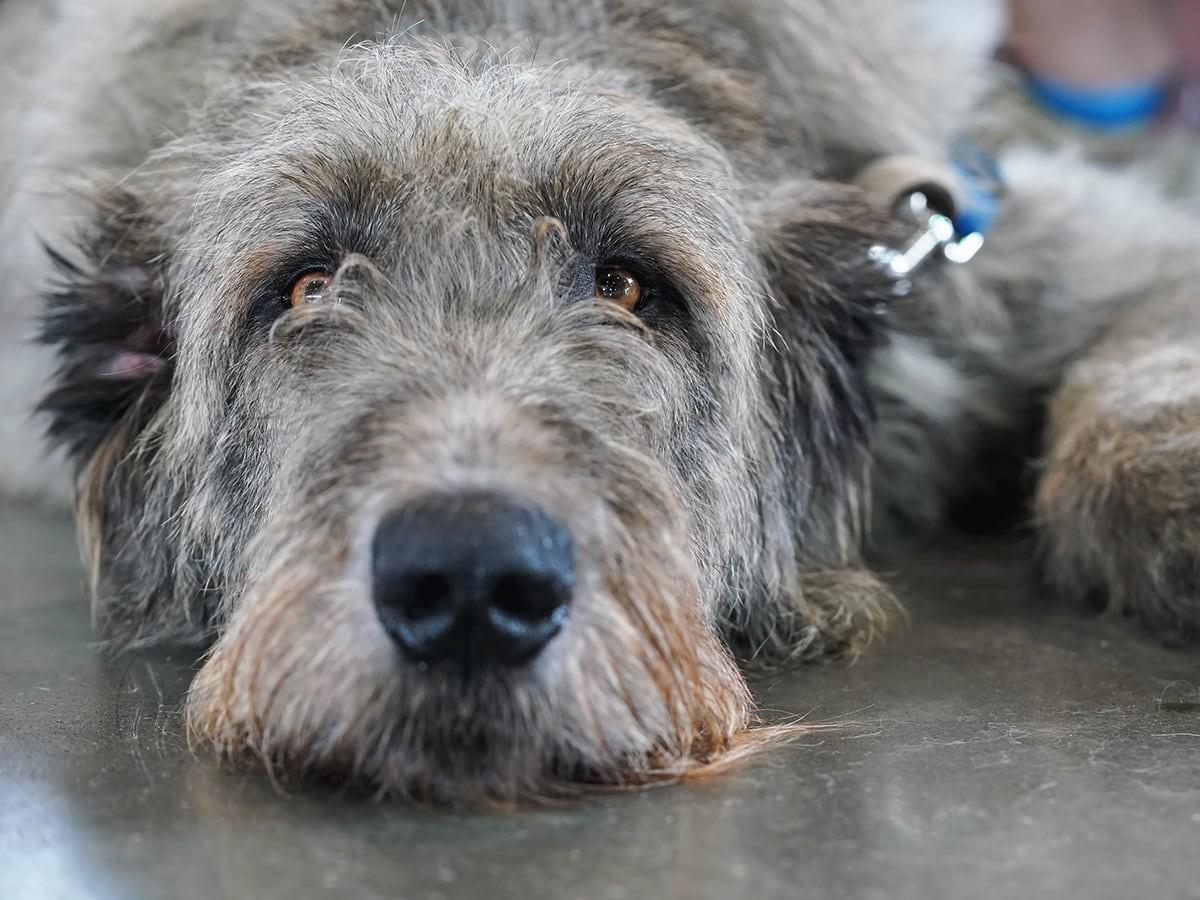Anxiety in dogs, especially since COVID, has been on the rise and continues to drive unpredictable behaviors that leave dog owners struggling, confused, and overwhelmed.
As owner of Hope Gables Canine, a dog training and rehabilitation center located in CT, we’ve successfully helped hundreds of owners across the world tackle this nuanced issue, and you might be surprised to find out that the reasons you may think your dog has developed anxiety may not be what you’ve read, or heard in passing.
In writing this post, we will dissect what’s going on in your dog’s mind, and provide actionable insight into how you can help your dog cope with their emotions in ways that are far healthier than what you may be experiencing today.
Common Ways Anxiety Develops in Dogs:
1. An unpredictable daily routine
An unpredictable daily routine that often changes or makes it hard for a dog to predict what might come next, creates a feeling of being on edge, in turn, leading dogs to pace, whine, bark incessantly, or feel ultimately unsettled from the moment they wake up.
2. Unclear boundaries in the home or a lack of healthy separation routinely during the day
Separation anxiety is a common form of anxiety that dogs develop when a member of the family separates from them for a period of time, sometimes even just for a few minutes. COVID only exacerbated this issue and led to some of the worst cases of separation anxiety dog trainers have ever seen.
3. Negative experiences that solidify into insecurities later in life
A dog that has been attacked in the past by another dog, for example, may whine, whimper, or try to flee from dogs approaching them in the future. This triggering moment, and others like it, can make a dog feel anxious in similar contexts to how the anxiety initially developed.
Anxiety can stem from any or a combination of the above. If you’re lost on how to get started tackling some of these issues you’re facing with your dog, we’ve listed some actionable steps below that you can take TODAY to help your dog feel more at peace.
Steps to Help Your Dog Settle:
1. Establish a clear communication system, including clearly defined boundaries in the home.
The first step is removing as many unpredictable moments during the day as you can which are likely triggering some of your dog’s anxious behavior. You’re going to want to make sure that your dog has safe spaces in the home for which they feel protected. This includes two main boundaries, a mobile boundary (such as a “Place” or bed command), and a stationary boundary, such as a crate in a quiet room with little distractions. You will use each for different contexts throughout the day to help your dog practice calmness.
2. Comfort your dog in a way that builds their confidence.
When your dog is feeling anxious, how you communicate to them is especially important. You want to avoid picking them up, petting them, whispering to them, et. cetera. Dogs need to feel like they have a strong leader in these moments. Therefore, instead, use a leash if needed to effectively guide your dog to an area where they feel protected, and reward them with a treat for making good decisions. Conversely, hold them equally accountable for not following through on the guidance you may be providing in these moments. This will build trust in your relationship over time and your dog will feel more confident as a result.
3. Keep your head up!
Tackling behavioral issues in dogs can oftentimes feel like you’re taking two steps forward and one step back. Trust us, that is how it’s supposed to feel! If you’re finding yourself becoming discouraged, it’s likely that you’re on the right track, as these emotions are an entirely normal part of the process. Stay positive and set aside moments during the day to take a break from training. You (and your dog) deserve it 😊
In Closing:
Solving anxiety in our dogs can feel like a daunting task but it starts with ourselves, understanding how our habits can have a profound impact on our dog’s behavior, and how changes in the home may feel hard at first but is necessary for the long-term health of your furry friend.

Nicolas Angione is the founder and head dog trainer at Hope Gables Canine, based in Fairfield County, CT. Inspired by his own dog's reactive journey and rehabilitation, he left his career behind to become a dog trainer. After years of shadowing other dog trainers in the industry, he started his own practice, which has successfully helped hundreds of dog owners, both domestic and abroad, regain peace and harmony with their dogs. Many of these success stories, dog training tips, and more can be found on their Instagram and YouTube pages.











